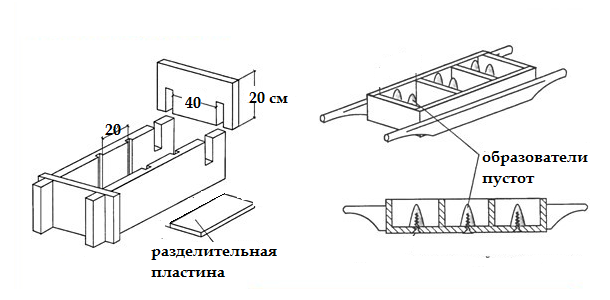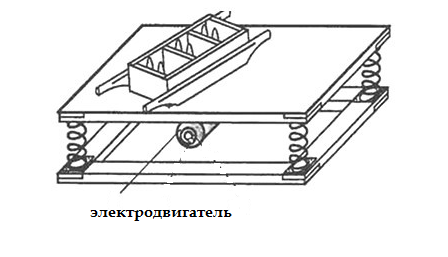Cinder block: can we make it ourselves?
To make a cinder block with your own hands is quite within the power of a skilled builder. With a relatively low price for this type of building material, the desire to save money sometimes turns out to be predominant, and craftsmen make attempts to cast the required number of concrete blocks on their own. This is especially true for those who require elements of a non-standard shape or size.
What the cinder block is made of is clear from its name: the main component of the mixture is coal slag. The binder in the mixture is building cement. The secret of neat and durable blocks is the correct proportion of components. The most famous and tested is the following composition of the cinder block:
- coal slag (blast furnace or from the state district power station) - 7 parts;
- coarse river sand - 2 parts;
- gravel or crushed stone with a fraction of 5-15 mm - 2 parts;
- cement M400-M500 - 1.5 parts;
- water - 1.5-3 parts.
The amount of water in the solution may be different depending on the method of manufacturing concrete parts. When pouring into conventional cinder block molds, without pressing, it is recommended to use a mixture of a more liquid consistency to fill the corners of the matrix well with it.
When vibrocompressing, a plasticizer for concrete (or PVA glue) can also be added to the mixture at the rate of 5 g per 1 cinder block. Considering that 36 pieces of finished products of a standard size (40x20x20 cm) will come out of a bag of cement, it is easy to calculate the amount of additive. The plasticizer makes concrete more resistant to moisture and reduces the risk of cracking in the product during drying.
Block Forming Methods

Form for cinder blocks
How to make a cinder block with your own hands, if special equipment is not used? With a small amount of construction (garage, bathhouse, etc.), the required number of concrete elements can be made by pouring the mixture into ordinary forms, similar to the formwork for the above-ground part of the foundation. The only difference will be that inside the space must be divided into separate chambers that form the body of each concrete product.
How to make a mold for a cinder block with your own hands is shown in the figure on the left. The number of simultaneously produced products may be different. It depends on the availability of boards of the required length for the formwork walls. The indicated cell dimensions (20x20x40 cm) are suitable for the production of a standard block. If necessary, formwork can be made with cells of the desired size (for a semi-block, for example, 20x20x20 cm or others). The outer walls of the formwork are made of planed boards of the required width. Between themselves, they can be fastened with sliding grooves. On the inner sides of the long boards, make cuts for the dividing plates. Particular attention should be paid to the fact that in the assembled state the form should have perfectly right angles at the junction of the walls and partitions. The appearance of the finished product and the convenience for the builder himself when laying elements that are well suited to each other depend on this.
Void formers in a simple wooden form can be glass bottles that need to be placed in a poured solution. In this case, a certain amount of the mixture will be forced out of the formwork, therefore, when using this method, the cells should not be filled to the top. After installing the bottles, you need to ensure that the solution in all cells is at the level of their edges.
When manufacturing a matrix of a more complex design (figure, on the right), make void formers from wooden cones, fixing them at the bottom with nails or self-tapping screws. The presence of handles in this form makes it possible to move it for installation on a vibrating table.
Before pouring the composition into molds of any design, the internal surfaces must be lubricated with used automotive oil or a similar lubricant.
This will prevent the mixture from sticking to the mold and make it easier to remove when the blocks are ready. It is necessary to remove the mold with this method of making cinder blocks with your own hands no earlier than 24 hours after filling the cells. Finished products must gain strength for another 1 month before use. After that, walls of buildings, fences, etc. can be erected from the cinder block.
How to make a vibrating machine?
Making a cinder block at home by casting takes a lot of time. The quality of the obtained products is somewhat inferior to that which can be obtained using the vibrocompression method. But this requires special equipment - machines for cinder blocks, which you can buy or make yourself.
The most affordable and simple installation is a vibrating table. To create such a machine for cinder blocks with your own hands, you will need:
- boards or metal profile for the base;
- metal plate or wooden shield;
- motorcycle damping springs;
- two-shaft electric motor with a power of 0.5-0.7 kW.
To build a machine for the production of cinder blocks with your own hands, you will also need working tools: a drill, a grinder or a saw, a welding machine, etc. Using the drawings (figure), the home master is able to assemble a frame for the base, on which 4 springs are fixed. On top of this structure, a solid wooden shield or metal plate must be laid. The tabletop can be fastened to the springs by welding or threaded connection. The dimensions of the base and tabletop must be sufficient to accommodate the existing molds, or the matrices themselves can be made to fit the existing slab.

On the underside of the tabletop, it is required to firmly fix the electric motor. In order to create a vibration of the desired frequency and strength during its operation, eccentrics must be installed on the motor shafts. These can be metal plates with a hole displaced from the center or pulleys, on which a small load is welded from one end.
The purpose of these parts is to unbalance the uniform rotation of the shaft and create vibration during its operation, which will be transmitted to the countertop, mounted on springs. The size of the eccentrics or the weight of the load will have to be selected individually, depending on the engine power and speed.
The form with the filled solution is established on a table-top. When the engine is turned on and the vibration it produces, the solution thickens and settles a little. Making cinder blocks with your own hands using such a machine requires filling the matrix with a small excess. Pressing on a vibrating table is carried out until the concrete laid in the mold acquires strength, which makes it possible to remove the formwork and transfer the products from the countertop to the drying place. For a homemade machine, this time is best determined experimentally.
For a more complex model of the machine, sheet metal 2-3 mm thick and a welding machine will be needed. In this case, it is necessary to weld a box of the required size with cells or a single box from the metal, for the manufacture of 1 block. The dimensions indicated on the drawing (figure) allow you to obtain a product of a standard size of 20x20x40 cm.

Cinder block making machine
The box does not have a bottom and needs to be installed on a flat base (metal plate). On its side (short) sides, for stability, you can additionally weld 2 pieces of pipe, longer than the width of the box. This will allow the structure not to tip over during vibration. Edges are welded onto the upper perimeter, which allow you to accurately fill the matrix.
In this case, the void formers are located on top and are metal parts that are round or square in cross section. Their width as they go deeper into the cavity of the matrix should become smaller, forming an inverted cone or pyramid. This is necessary for easy removal of the box from the product. The void formers are fixed on the walls of the box with a narrow metal strip.
Inside the box, at a distance of 20 cm from the lower edges, 2 stops for the pressure plate are welded. The plate must have handles for removing it from the product and slots in the form of a section of void formers.
An electric motor with eccentrics is attached to the outer side of the matrix. When the engine is running for 5-15 seconds, the mass of concrete poured into the box is pressed. The pressure plate is gradually lowered onto the stops.
When the limiters are reached, a home-made machine for making a cinder block with your own hands must be turned off, the plate removed, and the box vertically raised. Transfer the product to a flat area for drying and curing.
 Masonry mortars for brick kilns
Masonry mortars for brick kilns Why do the windows fog up in the apartment
Why do the windows fog up in the apartment Construction and schemes of brick ovens
Construction and schemes of brick ovens How to lay paving slabs: tips and tricks
How to lay paving slabs: tips and tricks How to drill bathroom tiles
How to drill bathroom tiles Monolithic slab on coarse soil
Monolithic slab on coarse soil Which electric heater is economical
Which electric heater is economical